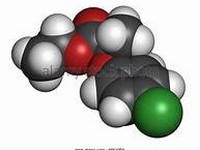Ciprofibrate
CLINICAL USE
Hyperlipidaemia
DOSE IN NORMAL RENAL FUNCTION
100 mg daily
PHARMACOKINETICS
DOSE IN RENAL IMPAIRMENT
GFR (mL/MIN)
DOSE IN PATIENTS UNDERGOING RENAL REPLACEMENT THERAPIES
IMPORTANT DRUG INTERACTIONS
Potentially hazardous interactions with other drugsAntibacterials: increased risk of myopathy with daptomycin – try to avoid concomitant useAnticoagulants: enhances effect of coumarins and phenindione. Dose of anticoagulant should be reduced by up to 50% and readjusted by monitoring INRAntidiabetics: may improve glucose tolerance and have an additive effect with insulin or sulphonylureasLipid-regulating drugs: increased risk of myopathy in combination with statins (do not exceed 10 mg of simvastatin1) and ezetimibe – avoid concomitant use with ezetimibe
ADMINISTRATION
Reconstition
–
Route
Oral
Rate of Administration
–
Comments
–
OTHER INFORMATION
Increased risk of rhabdomyolysis in doses of 200 mg or greaterApproximately 30–75% of a single dose administered to volunteers was excreted in the urine in 72 hours, either as unchanged ciprofibrate (20–25% of the total excreted) or as a conjugate. Subjects with moderate renal impairment excreted on average 7% of a single dose as unchanged ciprofibrate over 96 hours, compared with 6.9% in normal subjects. In subjects with severe insufficiency this was reduced to 4.7%
